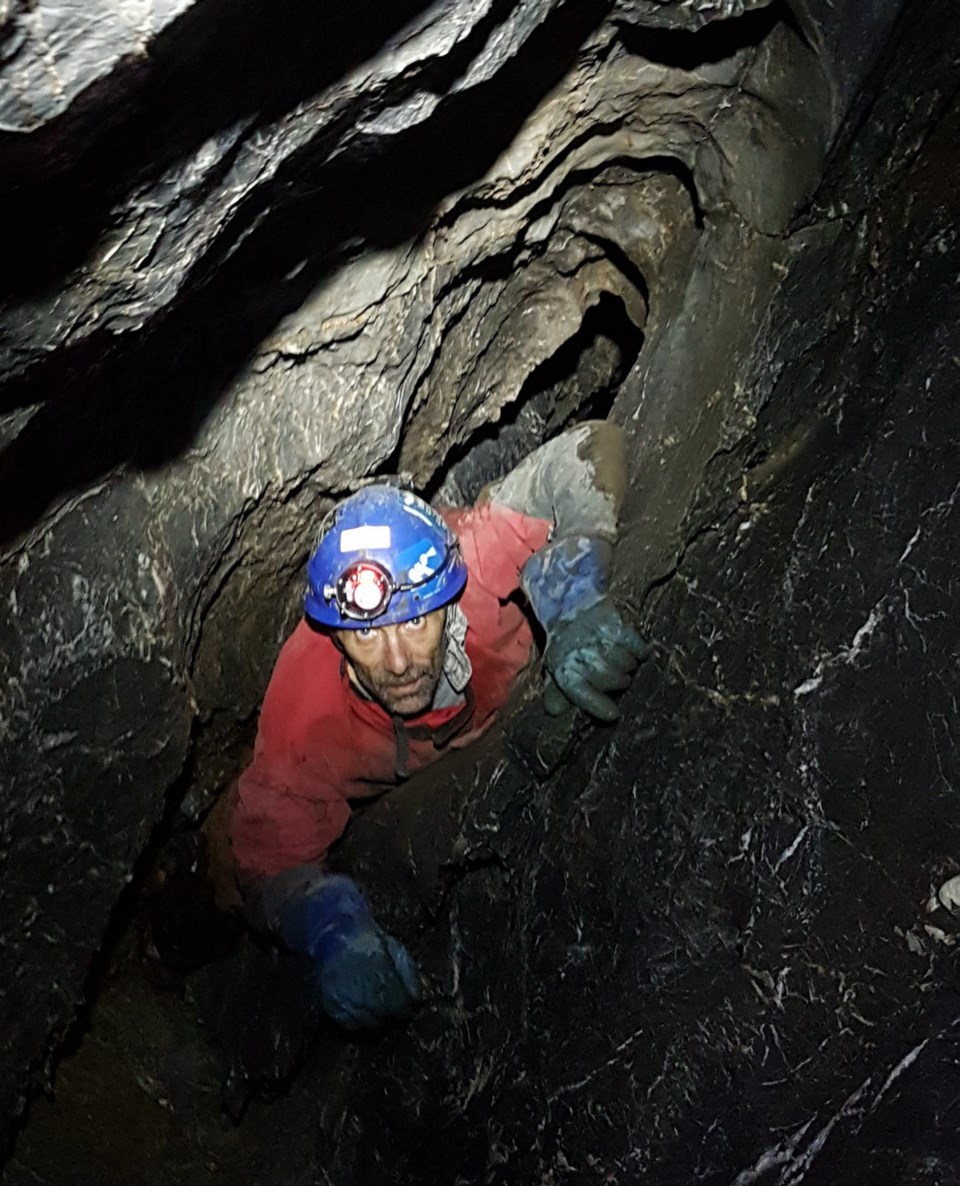Vancouver Island outdoorsman Craig Wagnell has no children to carry his name, but a tiny creature living in a cave near Sproat Lake will now bear his name in scientific literature.
Haplocampa wagnelli, a white, insect-like creature, about five millimetres long from the tip of its antenna to the very end of its rear appendages, is described as a unique species in the scientific journal Subterranean Biology.
It was discovered in 2006 by 57-year-old Wagnell, a long-time caver, hiker, former forest worker and first-attack forest firefighter. He lives in Port Alberni with his wife, Tawney Lem, who helped him capture and collect specimens of the creature.
“I don’t have children, so [the name] is pretty neat,” he said from his home.
“Every Wagnell in the world is basically related, because the name only goes back about three generations. For the bug, we just had to add an ‘i’ to make it Latin.”
He said he has been in contact with several scientists, including paleo specialist Richard Hebda, formerly of the Royal B.C. Museum, and has learned that his species could have lived in its cave habitats on Vancouver Island before and during the last ice age.
“It’s another piece of the puzzle,” said Wagnell.
The new name was affixed by Spanish biologist Alberto Sendra at the University of Alcala near Madrid, who was first alerted to the creature when he found a video of it on YouTube.
Sendra told the Times Colonist via email that he wrote to Wagnell, who quickly replied, sending several specimens.
Sendra said an optical microscope and a scanning electron microscope showed several clear differences between Wagnell’s discovery and other “diplurans.”
Not a bug or insect, the Haplocampa wagnelli, known by the common name “two-pronged bristle tail,” belongs to a scientific order called Diplura.
Prof. Steve Perlman, an insect biologist or entomologist at the University of Victoria, said diplurans, by a stroke of evolutionary “bad luck,” don’t get to join the insects. “They are on that branch of the tree of life that diverged before insects were born,” said Perlman.
While they share some characteristics with insects — six legs, a body composed of a head, abdomen and thorax — features of their mouths differ from those of insects.
Diplurans also tend to be small, just a few millimetres, and live out of sight in the soil or leaf litter. “They are pretty nondescript,” said Perlman. “So even though they are pretty common, we tend not to know very much about them.”
Perlman said the discovery of “is exciting because it’s a cool group of diplurans that hang out in caves.”
“We know very little about diplurans and even less [about] those that live in caves.”
Richard Varela, director of Horne Lake Caves Provincial Park, said Vancouver Island has more caves per square kilometre than any other spot in Canada.
At least 1,600 caves are known and many others are likely undiscovered or unrecorded.
Many of the caves are portions of rivers and many are interconnected, which might help explain how a species moves from one cave to another.
“They are little understood because most of them aren’t seen,” said Varela.



